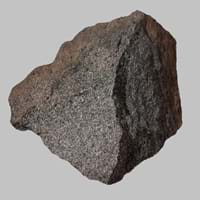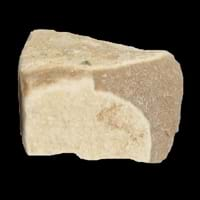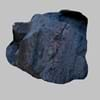Definition
Larvikite is an igneous rock and a variety of monzonite, notable for the presence of thumbnail-sized crystals of feldspar
Mudstone is a fine-grained, dark gray sedimentary rock, which is formed from silt and clay and is similar to shale but has less laminations
Origin
Larvik, Norway
Unknown
Discoverer
Unknown
Unknown
Etymology
From the town of Larvik in Norway, where this type of igneous rock is found
From the English mud and stone, from low German mudde and stainaz
Class
Igneous Rocks
Sedimentary Rocks
Sub-Class
Durable Rock, Hard Rock
Durable Rock, Soft Rock
Group
Plutonic
Not Applicable
Other Categories
Coarse Grained Rock, Fine Grained Rock, Medium Grained Rock, Opaque Rock
Fine Grained Rock, Opaque Rock
Texture
Phaneritic
Clastic
Color
Black, Brown, Light to Dark Grey, White
Black, Blue, Brown, Green, Grey, Orange, Red, White, Yellow
Durability
Durable
Durable
Appearance
Shiny
Rough and Dull
Interior Uses
Decorative Aggregates, Homes, Interior Decoration
Decorative Aggregates, Entryways, Floor Tiles, Interior Decoration
Exterior Uses
As Building Stone, As Facing Stone, Garden Decoration, Office Buildings, Paving Stone
As Building Stone, As Facing Stone, Paving Stone, Roof Tiles
Other Architectural Uses
Curbing
Curbing
Construction Industry
As Dimension Stone, Cement Manufacture, Construction Aggregate, for Road Aggregate
Cement Manufacture, Construction Aggregate, for Road Aggregate, Making natural cement, Raw material for the manufacture of mortar
Medical Industry
Not Yet Used
Not Yet Used
Antiquity Uses
Artifacts, Monuments, Sculpture
Sculpture, Small Figurines
Commercial Uses
Cemetery Markers, Commemorative Tablets, Creating Artwork
Creating Artwork, Pottery
Types
Quartz Monzonite, Syenite and Diorite
Marl, Shale and Argillite
Features
Available in lots of colors, Is one of the oldest rock
Available in Lots of Colors and Patterns, Smooth to touch, Very fine grained rock
Archaeological Significance
Monuments
Used
Not Yet Used
Famous Monuments
Data Not Available
Not Applicable
Famous Sculptures
Data Not Available
Data Not Available
Pictographs
Not Used
Used
Petroglyphs
Not Used
Used
Formation
Larvikite is a fine-grained, hard rock which is a type of metasomatite, essentially altered basalt. It forms with or without crystallization, either below the surface as intrusive rocks or on the surface as extrusive rocks.
Mudstone forms when very fine-grained clay particles are deposited in water which settle at the bottom of water bodies. They are buried and compacted by overlying sediment hence forming mudstone.
Mineral Content
Albite, Amphibole, Apatite, Biotite, Feldspar, Hornblade, Ilmenite, Magnetite, Muscovite or Illite, Olivine, Plagioclase, Pyroxene, Quartz, Sulfides, Titanite, Zircon
Biotite, Chlorite, Feldspar, Micas, Muscovite or Illite, Plagioclase, Pyrite, Quartz
Compound Content
Aluminium Oxide, CaO, Iron(III) Oxide, FeO, Potassium Oxide, MgO, MnO, Sodium Oxide, Phosphorus Pentoxide, Silicon Dioxide, Titanium Dioxide
Aluminium Oxide, NaCl, CaO, Iron(III) Oxide, Silicon Dioxide
Types of Metamorphism
Cataclastic Metamorphism, Impact Metamorphism, Regional Metamorphism
Not Applicable
Types of Weathering
Biological Weathering, Chemical Weathering, Mechanical Weathering
Chemical Weathering, Mechanical Weathering
Types of Erosion
Chemical Erosion
Chemical Erosion, Sea Erosion
Grain Size
Medium to Fine Coarse Grained
Very fine-grained
Fracture
Not Available
Not Available
Porosity
Less Porous
Highly Porous
Luster
Subvitreous to Dull
Dull
Compressive Strength
Not Available
Cleavage
Not Available
Perfect
Toughness
Not Available
2.6
Specific Gravity
2.8-3
2.2-2.8
Transparency
Opaque
Opaque
Density
2.9-2.91 g/cm3
2.4-2.8 g/cm3
Resistance
Heat Resistant, Impact Resistant, Pressure Resistant
Heat Resistant, Impact Resistant
Deposits in Eastern Continents
Asia
Not Yet Found
Bangladesh, China, India, Russia
Africa
Not Yet Found
Ethiopia, Kenya, Morocco, South Africa, Tanzania
Europe
Bulgaria, England, Germany, Norway, Romania, Switzerland
Austria, France, Germany, Greece, Italy, Romania, Scotland, Spain, Switzerland
Others
Not Yet Found
Not Yet Found
Deposits in Western Continents
South America
Argentina, Bolivia, Brazil, Chile, Colombia, Ecuador, Peru
Bolivia, Chile, Colombia, Ecuador, Peru, Venezuela
Deposits in Oceania Continent
Australia
New South Wales, New Zealand, Queensland, South Australia, Western Australia
New South Wales, New Zealand, Queensland, Victoria, Western Australia
Larvikite vs Mudstone Characteristics
Though some rocks look identical, they have certain characteristics which distinguish them from others. Characteristics of rocks include texture, appearance, color, fracture, streak, hardness etc. Larvikite vs Mudstone characteristics assist us to distinguish and recognize rocks. Also you can check about Properties of Larvikite and Properties of Mudstone. Learn more about Larvikite vs Mudstone in the next section. The interior uses of Larvikite include Decorative aggregates, Homes and Interior decoration whereas the interior uses of Mudstone include Decorative aggregates, Entryways, Floor tiles and Interior decoration. Due to some exceptional properties of Larvikite and Mudstone, they have various applications in construction industry. The uses of Larvikite in construction industry include As dimension stone, Cement manufacture, Construction aggregate, For road aggregate and that of Mudstone include Cement manufacture, Construction aggregate, For road aggregate, Making natural cement, Raw material for the manufacture of mortar.
More about Larvikite and Mudstone
Here you can know more about Larvikite and Mudstone. The life cycle of a rock consists of formation of rock, composition of rock and transformation of rock. The composition of Larvikite and Mudstone consists of mineral content and compound content. The mineral content of Larvikite includes Albite, Amphibole, Apatite, Biotite, Feldspar, Hornblade, Ilmenite, Magnetite, Muscovite or Illite, Olivine, Plagioclase, Pyroxene, Quartz, Sulfides, Titanite, Zircon and mineral content of Mudstone includes Biotite, Chlorite, Feldspar, Micas, Muscovite or Illite, Plagioclase, Pyrite, Quartz. You can also check out the list of all Igneous Rocks. When we have to compare Larvikite vs Mudstone, the texture, color and appearance plays an important role in determining the type of rock. Larvikite is available in black, brown, light to dark grey, white colors whereas, Mudstone is available in black, blue, brown, green, grey, orange, red, white, yellow colors. Appearance of Larvikite is Shiny and that of Mudstone is Rough and Dull. Properties of rock is another aspect for Larvikite vs Mudstone. The hardness of Larvikite is 6-7 and that of Mudstone is 2-3. The types of Larvikite are Quartz Monzonite, Syenite and Diorite whereas types of Mudstone are Marl, Shale and Argillite. Streak of rock is the color of powder produced when it is dragged across an unweathered surface. The streak of Larvikite and Mudstone is white. The specific heat capacity of Larvikite is 0.92 kJ/Kg K and that of Mudstone is 0.39 kJ/Kg K. Depending on the properties like hardness, toughness, specific heat capacity, porosity etc., rocks are resistant to heat, wear, impact, etc.Larvikite is heat resistant, impact resistant, pressure resistant whereas Mudstone is heat resistant, impact resistant.





